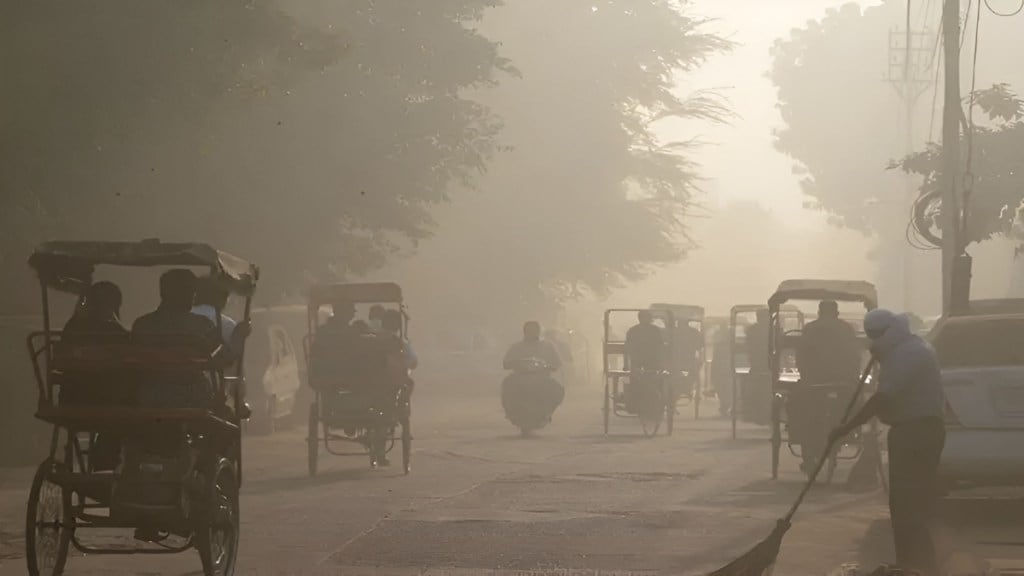By Anju Goel and Harshit Gupta
The National Clean Air Programme (NCAP) was launched by the Ministry of Environment, Forest, and Climate Change (MoEFCC) in 2019 to address air pollution across 131 non-attainment cities in 24 states and Union Territories (UTs). The programme initially set a target of reducing particulate pollution (PM₁₀) by 20 to 30 percent by 2024-25 compared to the baseline year of 2017-18, which was later increased to a 40 percent reduction (based on the 2019-20 baseline) or to achieve the national standard of 60 µg/m³ by 2025-26. Non-attainment cities (NACs) are those where particulate matter less than 10 µm in aerodynamic diameter (PM₁₀) has not met the National Ambient Air Quality Standard (NAAQS) of 60 µg/m³. Under this programme, Rs.19,611 crore has been allocated to 131 cities for the period from FY 2019-20 to FY 2025-26, with funds disbursed based on air quality improvements in each city.
Improvement in air quality of cities based on target
Yearly targets have been set for identified NACs by the Central Pollution Control Board based on consultations with Urban Local Bodies (ULBs). In 2023-24, only 20 cities achieved a reduction in PM₁₀ concentrations greater than 30 percent, 10 cities achieved reductions between 21-30%, and 12 cities recorded moderate reductions of 11-20% compared to 2019-20. Further, 29 cities made only minimal progress, with reductions in the range of 1-10% and 2 cities showed no improvement. Alarmingly, the air quality deteriorated in 58 cities in 2023-24 compared to 2019-20 levels. This raises concerns about the effectiveness of measures implemented to improve air quality. The NCAP measures improvements on a yearly basis, but the air quality of a city is highly dependent on meteorological conditions. Without effective control of actual emission sources, consistent improvements are challenging. Among the 131 NACs, 106 cities have failed to meet their NCAP targets by 2023-24, while only two major cities, Varanasi and Allahabad (among the 42 cities with million plus population under NCAP) have met their overall three-year targets set under NCAP.
Skewed utilisation of funds
Under NCAP, Rs.19,611 crore has been allocated to 131 cities for the period from FY 2019-20 to FY 2025-26. The release of funds is linked to air quality improvement performance and the achievement of annual targets for PM₁₀ reduction. As of FY 2023-24, Rs.11,211 crore has been released, and Rs.7,878 crore has been utilized. An analysis of sector-wise fund utilization (FY 2019-20 to FY 2023-24) shows that the majority of funds (67%) have been spent on mitigating re-suspended road dust emissions. The transport sector and biomass burning are the only combustion-based sources where funds have been spent at 13.7% and 11.5% respectively of the total funds utilized, largely because major industrial areas fall outside ULB jurisdiction. Around 4.2% of the funds were spent on capacity building while spending on sectors like construction & demolition, industries, public outreach and domestic fuel was negligible at 1.9%, 0.8%,0.6% and 0.1% respectively. For road dust management, funds were primarily used for end-to-end paving, road repair, maintenance, and mechanical sweeping, with comparatively less spent on reducing combustion sources such as transport emissions. This skewed utilization can be attributed to the limited knowledge among ULBs about effective air quality measures and the heavy focus on dust sources in NCAP evaluations.
Right matrix for evaluation
When NCAP was launched in the year 2019, due to the lack of sufficient air quality monitoring stations for PM2.5 across the country, PM10 was selected as a performance matrix for allocation of funds to improve air quality. However, PM10 concentration is majorly influenced by wind-blown dust which explains the tendency of cities to overspend in only one sector i.e. Road Dust (67%). This is the right time for the government to switch from PM10 to PM2.5 based targets allocations as most of the NCAP cities now have monitoring networks for PM2.5 concentration. Moving to PM2.5 based targets will motivate the cities to spend more money limiting the more harmful and toxic emissions from combustion sources such as biomass burning, industries and vehicles. The government can adopt a phased approach instead of completely shifting the matrix for evaluation from PM10 to PM2.5 in a single year. This will provide time to cities to understand the right set of measures they need to adopt for consistent improvement in the air quality.
Additionally, it is recommended to assess air quality improvement using a three- or four-year rolling average concentration rather than an annual measure, which can be biased by meteorological conditions and may not accurately reflect the efforts made to improve air quality.
Further, consideration can be given to seasonal changes in particulate matter concentration. Although air pollution is a year-round issue, it worsens in winter due to limited mixing height and poor ventilation conditions. Yearly averaged concentrations fail to account for air quality improvements specifically made during the winter season.
Due to geographical factors, most Indian cities experience higher background concentration of PM10 and PM2.5. For example, Delhi’s background concentration of PM10 and PM2.5 is 56 and 42 µg/m3 respectively making it challenging for cities to show improvements without addressing high urban background levels. To reduce these, a shift from a city-centric to an airshed level approach is needed. An airshed is an area where all locations are exposed to similar air pollution conditions. This approach would help account for pollution sources that fall outside ULB jurisdictions but significantly contribute to air pollution.
Dr Anju Goel, Fellow & Associate Director; and Mr Harshit Gupta, Consultant, Air Quality Research Division, The Energy and Resources Institute (TERI)
Disclaimer: Views expressed are personal and do not reflect the official position or policy of Financial Express Online. Reproducing this content without permission is prohibited.


